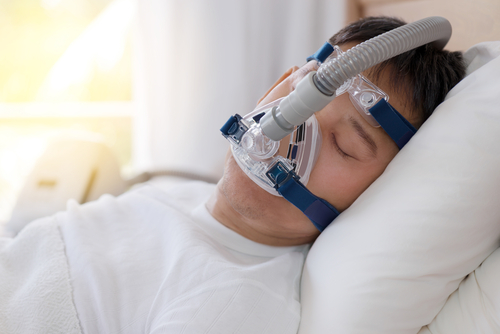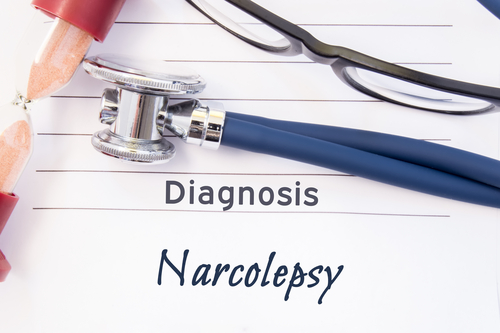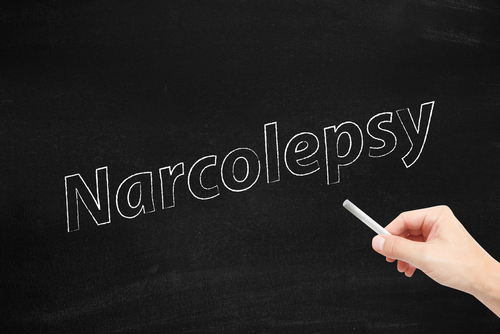Dr. Anne Marie Morse Previews SLEEP 2024
By Anne Marie Morse, DO, Rob Dillard - Last Updated: May 31, 2024SLEEP 2024 kicks off tomorrow in Houston, Texas. SLEEP is the annual meeting of the Associated Professional Sleep Societies, LLC. It’s a joint venture of the American Academy of Sleep Medicine and the Sleep Research Society (SRS). Who better to preview the world’s premier meeting on sleep medicine than one of the most prominent names in the world of sleep health?
We’d like to introduce Dr. Anne Marie Morse, a neurologist, educator, researcher, sleep health advocate, and now a DocWire News partner.
In this compelling interview, Dr. Morse details all the new, exciting data she most anticipates at SLEEP 2024, including the SRS roundtables and advancements in idiopathic hypersomnia, narcolepsy, and sleep apnea. She also discusses novel and emerging trends in sleep medicine and explains the important connection between sleep quality and daily function, especially as it pertains to health care providers. In the words of Dr. Morse, “sleep is a critical element for every single person on Earth to be the best version of themselves during the day.”
Please tell us about yourself.
I’m the Director of Child Neurology and Pediatric Sleep Medicine at Geisinger Janet Weis Children’s Hospital. What does that mean? It means that I’m a board-certified neurologist with special qualifications in child neurology as well as a fellowship-trained and board-certified sleep medicine specialist. What does that get you? It gets you someone who’s able to take on anything that has to do with the brain. We even sometimes dabble in terms of what can be psychiatric or mental illnesses. My main focus, however, is always making sure that we’re pushing out educational content that is streamlined and focused on sleep and utilizing that as a tool to achieve your best version of you, as well as for any of the patients that you’re taking care of.
Can you discuss the connection between sleep quality and everyday function? What impact can poor sleep habits have on health care professionals?
Sleep is a critical element for every single person on Earth to be the best version of themselves during the day. For some reason, in medicine, we have taken a stance of disconnecting what the daytime looks like from the night, but the reality is that evidence has repeatedly demonstrated that sleep is the critical element to keeping all of the things together. When we’re looking at whether it’s duration, quality, timing of sleep, or the quality of wakefulness, what we’re recognizing is that they have the same features that when they are being disrupted, we are seeing worse outcomes, worse physical, mental, and emotional wellness altogether. In fact, in January of 2024, there was a new publication that has helped fulfill more knowledge by understanding that our focus on just sleep duration probably is lacking. Even though the most recent Gallup polls have demonstrated that 1 in 2 adults, and it’s actually closer to 60% of adults are getting insufficient sleep.
By examining the UK Biobank’s data, which had millions of data points, we have learned that sleep regularity may actually be the factor that is even more meaningful for achieving optimal health. The data demonstrated that irregular sleep, having wide swings in the time we’re going to bed and the time we’re waking up, and even more so fragmentation across the day, have a higher risk association with all-cause morbidity and mortality than insufficient sleep alone.
When we’re thinking about sleep, it’s not about the thing that in medicine we have been perpetuating as getting away with less of in order to do more in the day. What we should be leaning in on is utilizing sleep in terms of the quality, duration, and timing as the optimal tool that was well-designed in our bodies to be able to achieve the best version of us every single day.
What new/emerging trends in 2024 are you seeing with respect to sleep medicine and innovations?
What is so exciting is that we are now on the cutting edge of sleep. When you think about the field of sleep, it is a young field, only first established in the 1970s. We are now in 2024, and what we have seen is a field that has grown from focusing on things like sleep disorder, breathing, and even insomnia, to now really embracing rare sleep disorders like narcolepsy and idiopathic hypersomnia. With that stated, we now have a more fulfilling understanding of the pathophysiology that is driving some of these things, such as orexin deficiencies and narcolepsy type one. What has that resulted in? It has resulted in the development of novel drugs that are orexin agonists. In addition to that, we now are seeing that not only are they in phase 1, phase 2, but we have our first studies entering into phase 3 of utilizing these medications in central disorders of hypersomnia like narcolepsy type 1, type 2, and even idiopathic hypersomnia.
This is really transformative because now we are treating the cause versus just masking the symptoms that a person is experiencing. We want to further some of these advancements. We’ve seen that the world has been taken by storm by GLP-1 agonists. We think about them as being weight-loss drugs, and they’ve been kind of the miracle cure for many people who’ve struggled with weight management. In the United States, at least 75% of adults are overweight to obese, and of those, 50% have stated in the last year they’ve attempted to lose weight.
Now, we want to couple that with what we know weight can contribute to, including sleep disorder breathing and obstructive sleep apnea. Historically, we’ve limited ourselves to utilizing CPAP or BiPAP therapy. The reality is that not only have we been able to move the needle by utilizing manipular advancement devices and surgical therapies or options like hypoglossal nerve stimulators that are improving our upper airway tone, but we now we can also utilize GLP-1 GIP agonists, which have phase 3 data that demonstrate substantial benefit both with and without CPAP in improving the Apnea-Hypopnea Index and quality of life.
This is not only being able to provide weight loss. GLP-1 has both direct and indirect relationships with the neurotransmitter orexin, and what we know about orexin is that it’s not only wake promoting, but it also may be a facilitator in improving the quality of sleep at night. What we’re now seeing is a transformation to not only treating the symptoms, but again treating at the cause and helping people achieve the quality of day and night that they truly deserve.
SLEEP 2024 is on the horizon. Talk to us about the significance of this meeting. Specifically, what data are you excited about, and what notable research can attendees look forward to?
Every year, SLEEP is the biggest sleep conference in the world. It’s funny to think that in Houston, Texas, we’re going to see a turnout that is global in capacity and really transformative in terms of what we do in day-to-day clinical delivery of care. We’ll also get the research fundamentals that are driving future innovation. I’m most excited about the SRS’s roundtables, where we will discuss in detail some specific disease processes. I’m fortunate to be able to chair one of those, which will look at idiopathic hypersomnia and narcolepsy and dig into the current landscape and what the future has in store. We also are going to start seeing some of the data rolling out, as well as study designs that will be utilized for the newest class of drugs coming to market, and that’s orexin agonists.
We know that Takeda is going to be hitting the floors to show some of their abstracts and posters. They’ll also have some oral presentations around their newest phase 2 data and seeing what the future looks like with phase 3 close in sight. Other companies, because it’s a race to the finish, are also going to be presenting on whether it’s their study design or some of their early-phase data around their orexin agonists.
I have significant interest in how we’re continuing to see the emergence and evolution of sleep apnea management. We have gone from thinking about just PAP therapies as the standard of care to now seeing emergent data that have demonstrated great adherence and improvement in obstructive sleep apnea using things like mandibular advancement devices. We also have seen hypoglossal nerve stimulators be able to be utilized.
We are seeing an emerging spectrum of medications. We have our GLP-1 GIP agonists, which are injectables that have phase 3 data to demonstrate benefit. However, we’re also seeing our first oral therapies with a combination of atomoxetine and oxybutynin, which are also demonstrating significant improvement in advancement in the phase of study to potentially be the first oral medication available for a treatment of sleep disorder breathing. The reality is that we’ve moved away from purely thinking about a restricted scope of disease processes that we potentially can treat to now really acknowledging that the International Classification of Sleep Disorders Edition III text revision and, yes, that’s a mouthful, is really now acknowledging all 70 of those different disorders that exist within that book. We have more tools in our tool belt, and not only for this therapeutic landscape. We’re also starting to dig into the better diagnostics that we can consider.
Historically, it’s been in-lab polysomnography, and we have seen home sleep apnea testing being utilized, but the emerging data and research around other home testing is exciting, including remote patient monitoring testing. Machine learning and artificial intelligence aren’t going to replace our jobs but may actually augment what our eyes can’t see. The reality is that we are just at the beginning, at the cusp of a field where it is transdisciplinary. The research is demonstrating the impact and critical relevance across all disease processes, and being able to use this combination of different diagnostic strategies and therapeutic intervention is going to allow us to reach more patients so they can have their best nights for even better days.







 © 2025 Mashup Media, LLC, a Formedics Property. All Rights Reserved.
© 2025 Mashup Media, LLC, a Formedics Property. All Rights Reserved.